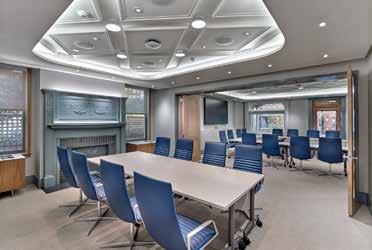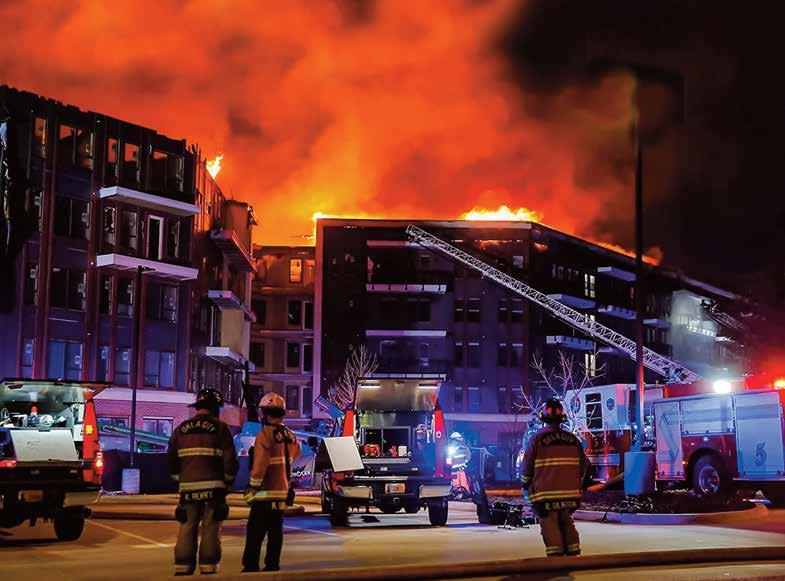CONSTRUCTION GUIDE
Philadelphia’s construction industry is filling the pipeline of new professionals, plus, learn how to stay ahead of costly disputes.
SPONSORED BY


Philadelphia’s construction industry is filling the pipeline of new professionals, plus, learn how to stay ahead of costly disputes.
SPONSORED BY

Philadelphia’s construction industry is better when we all build smarter and safer.
GBCA’s online education and safety resources let construction professionals and workers get training when and where they need it.

Smarts. Drive. Commitment. These qualities unite construction professionals, drive the industry and our region forward, and enable us to build Philadelphia’s skyline.
The General Building Contractors Association (GBCA) proudly represents the union commercial construction industry: We support our city’s economic stability and growth, our communities’ access to construction careers, and our industry’s collaboration with other building industry groups and policy makers.
To do this, we must remain focused on building up our workforce, but not only in the construction trades. We must also support the pipeline of construction professionals, making pathways into careers and advancement in the industry accessible for all Philadelphians.
Any building project, be it new construction, preservation and adaptive re-use, or interior renovations, is collaborative work. By strengthening the relationships between our contractors with architects, engineers, and owners and developers, the impact of our efforts will only continue to grow.
 Byron Lee, PhD Senior Manager, Marketing & Communications General Building Contractors Association
Byron Lee, PhD Senior Manager, Marketing & Communications General Building Contractors Association



While we enter every project with the highest goals, and the best of intentions to work smoothly with our collaborators, cost overruns and disputes can occur, and between every party: contractors, architects, owners, and subcontractors. Some disputes are simple, but when they become complex and formal resolution is required, they can become a drain on the organization in terms of time and money. For smaller firms especially, the drain on resources can become dangerous, as dispute resolution takes focus away from the core business of executing work and obtaining new work.
When things get heated, most disputes become battles of wills. While contractual features, such as liquidated damages, can be put in place to preemptively establish how risk will be addressed in case of issues, such methods are punitive in nature, and can establish an adversarial relationship between the owner, architect, and contractor from the start.
Avoiding dispute resolution requires an attitude of problem solving during the building process rather than one where collaborators wait and see if an issue will result in a problem, and if it does, who is ultimately at fault.
Most dispute resolution cases take place after work is completed. A primary method of avoiding dispute resolution is to catch and address issues as early as possible. Addressing issues early may raise a project’s budget, but this cost can be easily exceeded by the cost of arbitration at a later date.
Keeping clear, consistent, and thorough records is invaluable, as these will create the record upon which the dispute and the involved parties are judged. Architects, contractors, and subcontractors all are involved in projects at different times, and one of
the challenges of dispute resolution is that certain parties may no longer be actively—or even recently—on the project.
Building construction is a collaborative industry, and it cannot be said enough that strong relationships between parties is invaluable. Regular checkins between owners, architects, and contractors where questions are encouraged can create opportunities for issues to be raised and not left to fester and become problems or disputes. Technical issues are often easier to manage than the relationships between collaborators. Strong relationships where parties more openly communicate can help reduce friction and mistrust.
Communication style is also important, especially when trying to raise issues. Like in any work situation, re-read emails and check for tone. Be aware of what communications are put into writing: assume that the last person you want to read your communication
will read it. Create a follow-up written record of verbal communications (i.e. phone calls) to ensure that both parties agree on what next steps were established.
While scheduling delays and other issues may not always be preventable, architects and contractors, with support of the project owners, can create systems where dispute resolution can be avoided, or at least less costly and time-consuming.
























The commercial construction industry is hardly alone in facing a labor shortage. It stands out, however, for its efforts to build a pipeline of construction business professionals. According to Benjamin Connors, President & CEO of the General Building Contractors Association (GBCA), this is where firms in Greater Philadelphia are seeing a need for talent.
“When most people think about construction jobs, they often think about the trades, people working with tools, but there’s also high demand for construction professionals, such as project managers, safety professionals, and estimators,” Connors explains. “This talent pinch is both an awareness issue and an education issue given that individuals need higher education to advance to these key roles.”
While GBCA offers continuing education to the construction industry through workshops and online courses, its Tuition Reimbursement Program specifically supports individuals’ pursuit of formal higher education in construction-related courses and programs at participating colleges and universities.
“I wouldn’t have been able to earn my bachelor’s degree in construction management if it weren’t for this assistance,” says Daniel Mangold, a superintendent at LF Driscoll and a recent Rowan University graduate. Mangold has already seen his education pay off: Lessons learned in school helped him complete a renovation project two months earlier than expected.
“Finances aren’t the only barrier to higher education, but it’s one of the biggest,” says Angela Hendrix, GBCA’s Senior Director of Training & Workforce Development. “Our Tuition Reimbursement Program ensures that finances are not holding anyone back from pursuing the careers they want.”
In recent years, the program’s impact has steadily grown. In 2021, GBCA awarded students more than $61,000, an increase of nearly 20 percent compared to 2019.
The program is also helps construction professionals build on existing college degrees and move the industry forward.
“GBCA’s Tuition Reimbursement Program pushed me to begin pursuing my master’s degree in construction management at Drexel,” says Peter Ding, a mechanical estimator at Herman Goldner Co., Inc., who holds an undergraduate degree in petroleum engineering.
Similarly, Paul McLaughlin, past Manager of Continuous Improvement at The Butz Family of Companies, parent company of Shoemaker Construction Co., is earning his master’s degree from Drexel after earning his bachelor’s degree in construction management and serving in the Marine Corps.


“GBCA enabled me to get the education I need to grow my impact,” explains McLaughlin, who blended MBA and construction management coursework to immerse himself in the business of construction.
“Some of the most successful construction firms are led by owners who grew up swinging hammers. We need to help people who already know the world of construction move through the ranks like this.”
His goal? To help owners and institutions adopt new technologies and more environmentally conscious construction methods. This is exactly the type of leader that will help fill the industry’s talent pipeline and keep GBCA member firms ahead of the curve.
– BS in Construction Management (4-year Professional ABET-ANSAC Accredited Degree)

– MS in Construction Management (Online and On-Campus)
– Construction Management Graduate Certificate (Online and On-Campus) Students admitted to degree-granting programs within the College of Architecture & the Built Environment are automatically considered for academic scholarships.
LEA R N MO R E: Jefferson.edu/CMpbj | 215-951-2800 | enroll@jefferson.edu
n $65 million luxury apartment complex in Oklahoma City destroyed by fire

n No rescues were needed and no injuries were reported
n Building was considered structurally unsound due to wood framing
n The fire spread quickly because of a thick, foamy rubberized material on the building’s rooftop that was resistant to water
93%
47% vs.